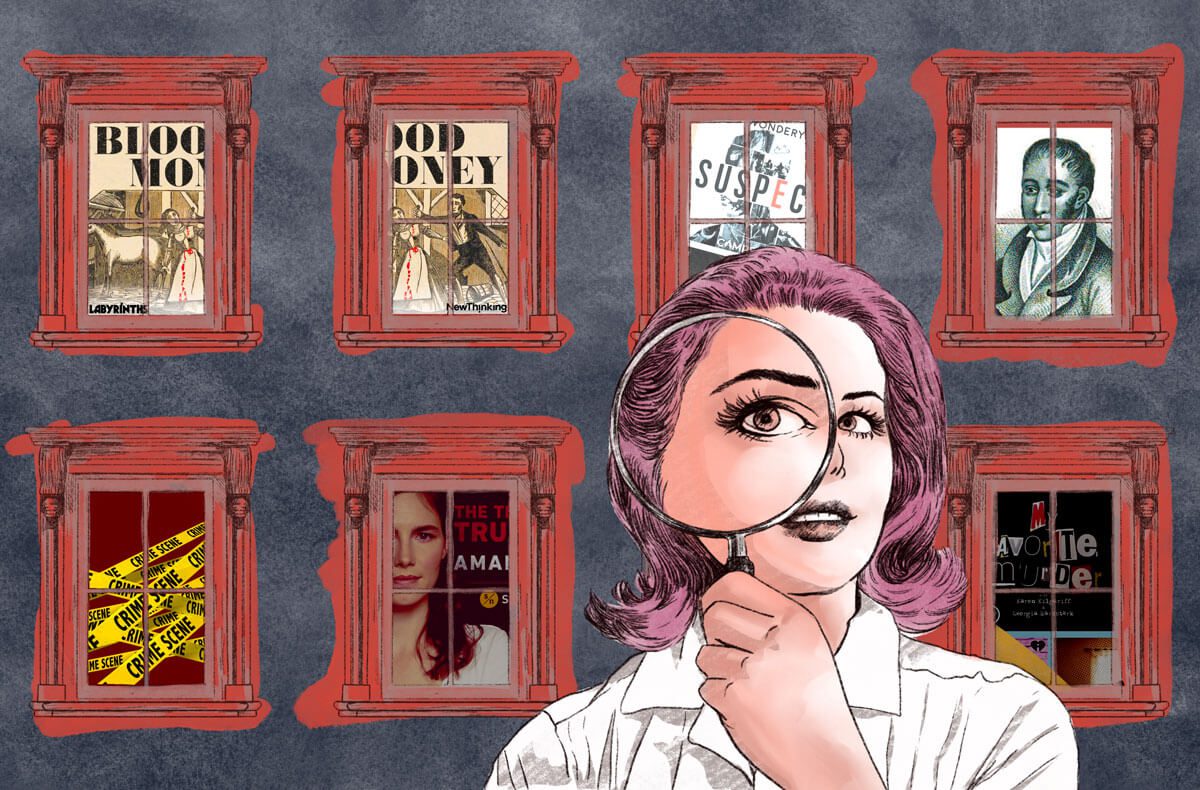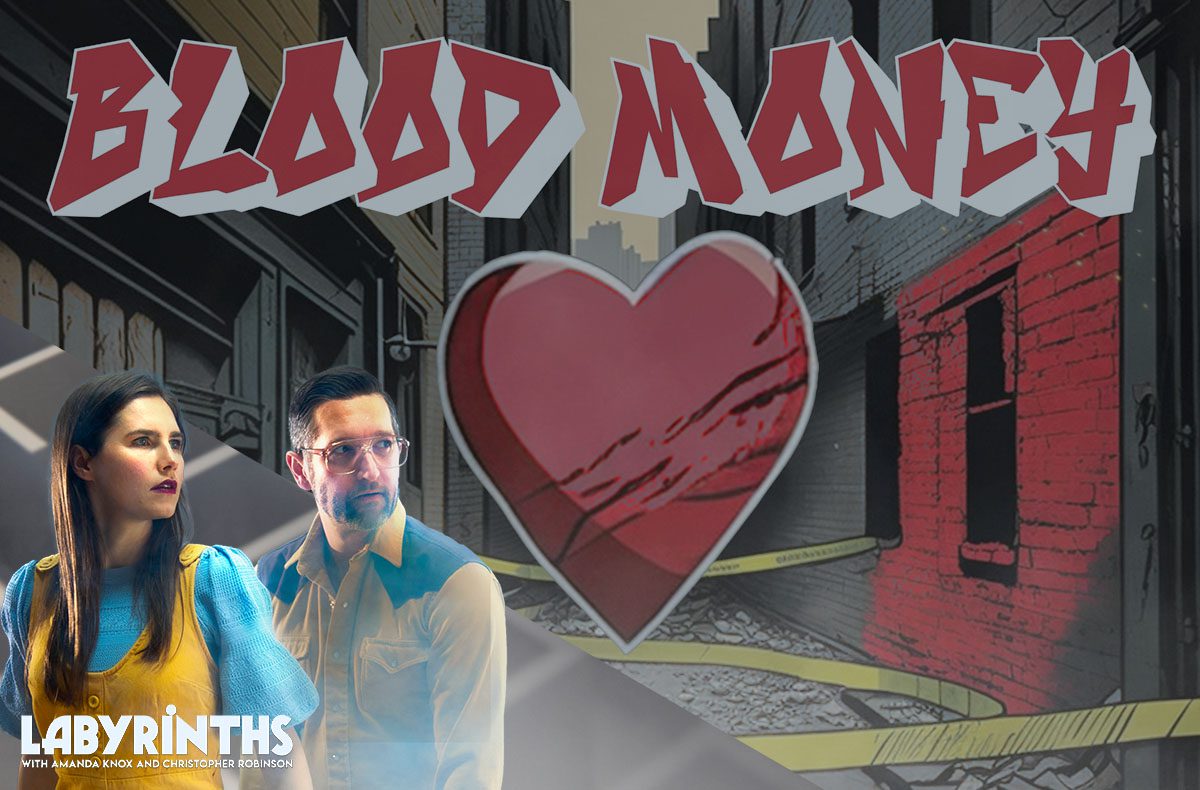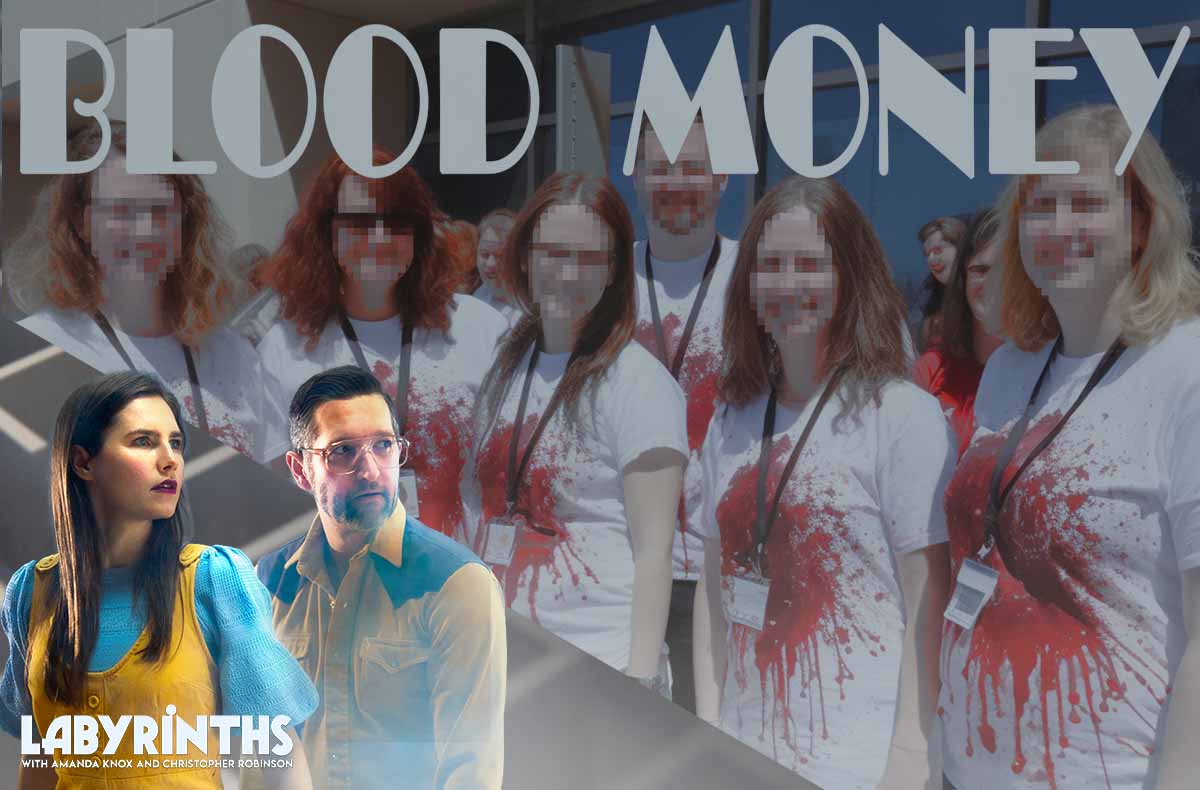
Illustration by Juliana Lagerstedt
I never wanted to be at the center of a sensational true crime story. Nobody does. But once I was thrust into the public eye, there was no going back. One moment I was living my life as an anonymous student. Without warning, my every action was under a microscope. Even after my acquittal, no part of my life was safe from scrutiny and judgment.
As I tried to find some meaning in the senseless murder of my roommate, as I tried to process the trauma of my resulting wrongful conviction, the storytellers descended like vultures, transforming all that tragedy into content. True crime sunk its teeth into my life and it has yet to let go.
I was never a fan of such stories. I don’t get the appeal of adding gruesome murders to the atmosphere of my weekend stroll with a true crime podcast. Or sitting down with a bowl of popcorn to unwind at the end of the day to a serial killer drama. That may sound surprising if you recall that I produced five seasons of a podcast called The Truth About True Crime.
I’ve also covered plenty of true crime stories on my podcast Labyrinths (now brought to you by New Thinking), such as the story of Samantha Geimer, who was raped by Roman Polanski, or Jason Baldwin, wrongly convicted as part of the West Memphis Three.
I’ve covered such stories because they come to me. For better or worse, people reach out to me because they know that I get what it’s like to be on the other side of that storytelling lens. They have felt the sting, as I have, of having their life and their suffering exploited by others for content.
True crime has an ethics problem. It often operates without the consent of the people at the center of these tragedies. It can glamorize killers and misrepresent victims. Even those with good intentions can cause harm. That’s hard to avoid when making an entertainment product based around the worst moment in someone’s life.
But true crime can also raise awareness about injustice, help solve an unsolved case and even bring closure to grieving families. I don’t want true crime to disappear. I want it to be better, to be more ethical.
What does ethical true crime look like? Is it even possible to preserve what’s good about true crime while diminishing the bad?
In seeking answers to those questions, I found myself looking further and further back into the history of this genre. These problems are hardly new. In fact, they’ve been around since the birth of media.
The world was a lot more violent in the past. Back in medieval England, historians estimate the murder rate was ten times what it is today. It may not seem that way, but that is largely a result of how swamped we are with media about crime. This has been true since the invention of the printing press and the spread of print media. By the 16th century, more official police departments were forming, crimes were being prosecuted, defendants were standing trial, public executions were taking place and early printers were running off broadsheets and pamphlets about all the gory details. The visibility of crime went way up.
These posters and pamphlets often focused on familial murders, the murders of children, or romantic and marital murders. And the ethical questions that ricochet through the true crime world today were present even back then. Was it morally proper to focus on the perpetrator instead of the victim?
The most prominent answer back then said not only was it proper, but it was necessary. These pamphlets and broadsheets usually had a moralizing message. They were designed to both maintain the social order and protect the souls of the citizenry from being corrupted by the devil. This religious motive was seen as perfectly consistent with the lurid stories and gruesome images being printed, often by clergy.
By the 19th century, the profiteering and sensationalism of true crime was out of control. Crime and violence inspired melodramas depicting brutal murders and gave audiences black-and-white narratives with stock villains. There were even marionette shows based on murder plots. The true crime fan of the 19th century might read about a sensational crime in the newspaper, watch a play based on the events, sing a song about the killer at a pub and spend an afternoon reading a penny dreadful booklet inspired by the murder.
This atmosphere and attitude towards stories about crime had real consequences for those accused. The story of John Thurtell, who was accused of murdering William Weare over a gambling debt, became a sensation. It filled the coffers of newspapers which published venomous and speculative rumors about Thurtell long before he had his day in court. Just two weeks before Thurtell’s trial, two different plays debuted in London based on the murder.
Thurtell’s belongings were even auctioned off to “murder tourists.” As Judith Flanders, author of The Invention of Murder, says, “Nearly everything about Thurtell had a commercial value.”
In reading about Thurtell, my first thought was how little has changed. While I was stuck in prison appealing my verdict, Lifetime aired a movie depicting me as a deeply suspicious attention-whore. They had no compunctions about how their entertainment product might affect my fate. And, of course, murder tourism and murderabilia are still a thing today. You can go on a tour in Milwaukee following the footsteps of Jeffrey Dahmer as he hunted, dismembered and ate his victims.
Artifacts from killers fetch hefty prices on auction sites, like a painting by John Wayne Gacy or a lock of hair from Charles Manson. I’m sure that if anyone had gotten their hands on a piece of my underwear while I was still in prison, it would have fetched a hefty price. But murder fandom in the 19th century went even further. Police procedures often meant leaving the victim’s body in place for some time and people would flock to the site to see the latest corpse. They could witness a public execution and perhaps buy a chunk of the executioner’s rope, sold by the inch.
But 19th century true crime wasn’t without its critics. In 1827, Thomas De Quincey wrote a still quite hilarious satire of the true crime fandom of his day. The essay, called, “On Murder Considered as One of the Fine Arts,” presents a fictional lecture given at a social club of murder aficionados, the 19th Century equivalent of a keynote speech at a true crime convention.
“They profess to be curious in homicide; amateurs and dilettanti in the various modes of bloodshed; and, in short, Murder-Fanciers. Every fresh atrocity of that class… they meet and criticize as they would a picture, statue, or other work of art.”
De Quincey’s satire is sharp because the argument he’s lampooning is actually put forward by true crime fans. There are moral concerns, of course, but beyond that, some crimes and some killers are simply fascinating… Is it so wrong to be fascinated?
Almost two centuries later, we’re still grappling with the consequences of consuming crime as entertainment. Trying to figure out how to do it ethically remains a tricky proposition. All storytelling necessarily distorts reality in some way, simply by accepting the point of view from which the story is told and the inevitable biases and agendas—explicit or implicit—of the storytellers.
I don’t claim to have all the answers for what ethical true crime looks like, but fortunately, I’ve been able to connect with a lot of people who’ve thought deeply about the ethics of this genre, about how it fails and how it succeeds. And I’ve brought their voices and perspectives into conversation in a new podcast miniseries: Blood Money, the history and ethics of true crime.
True crime doesn’t have to be crass, insensitive or exploitative, but it’s on us to care about how these stories are told. And that starts with asking the right questions. There are a few important ones, but perhaps the prime question for me when telling any story is this: Who has the most at stake?



